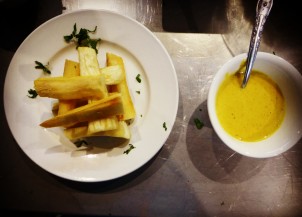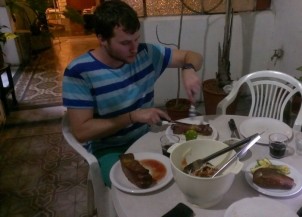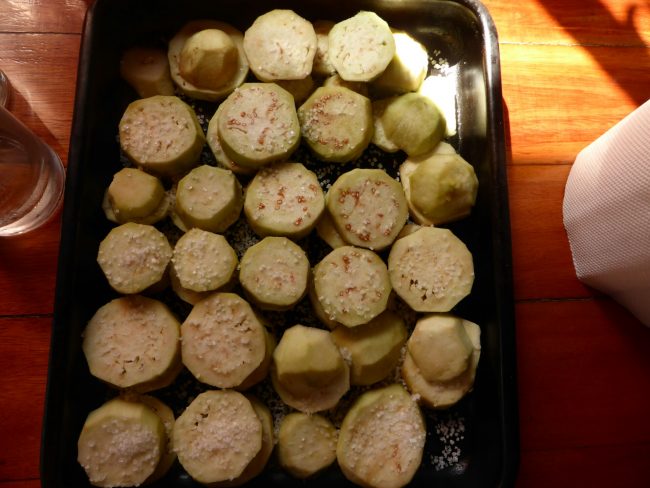Cassava is a native South American vegetable that I never knew what to do with, even though I saw it quite often in Dutch supermarkets. The answer came from the Peruvian cuisine... delicious deep fried cassava with a creamy, spicy sauce. Here is the recipe. Yummy 🙂
Cassava a la Huancaína for 4 people (as a starter)
Ingredients:
1 kg Cassava
4 Chillies
20 peanuts (unsalted)
1 small onion
3 cloves of garlic
few leaves of parsley
30 ml whole milk
8 crackers
Oil for deep frying
Recipe:
- Peel the cassava and cook until it is a bit soft (like cooked potato) +/- 25 min
- Cut the cooked cassava in pieces (around the size of Belgium fries) removing the core
- Deep fry the cassava until golden at 180°C
For the sauce:
- Chop the garlic, onion and chillies finely
- Saute the garlic then add the chillies and the onion, fry until soft
- In the meantime crush the peanuts to a paste and put them into a food processor, add 8 crackers, add the sauted garlic, chillies and onion mix, 30 ml of whole milk and the parsley. Blend until smooth
Dip the fried cassava in the sauce and enjoy 🙂




